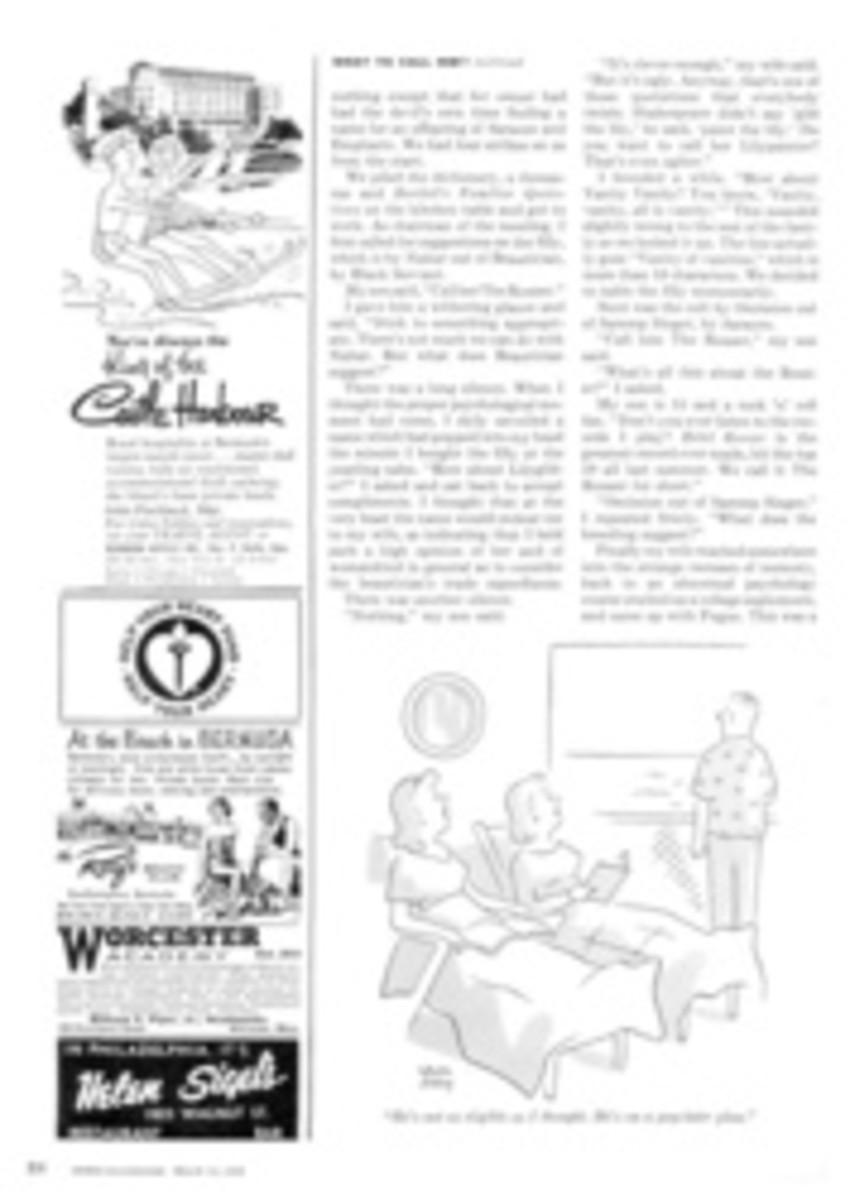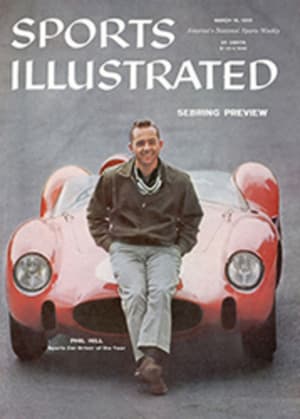
On and off the fairways
Golfer Billy Casper's total of $56,000 put him at the top of the list in tournament prize money won last year, but if you think he was the game's top earner in 1958 you're quite wrong. It's not exactly a secret that it was the West Virginia financier, Sam Snead. He and dollar bills have an affinity for one another, so much so that he has had an income of over $100,000 in each of the last 10 years. His taxable income for 1958 was in the neighborhood of $130,000, and its separate parts look something like this before deductions: winnings from 14 tournaments, $22,000; royalties from the Wilson golf clubs that carry his signature, $35,000, plus a salary of $10,000 for serving as a member of Wilson's advisory staff; 13 winning matches in the All-Star Golf TV series, $28,000; some two dozen playing exhibitions at $1,200 per date, $28,000. The rest is bulked out by his income from the golf concessions that Snead and Partner Garry Nixon run for the Boca Raton and Greenbrier resort hotels. At Boca in the winter and Greenbrier in the summer, Sam hustles through a few lessons at $15 for a half hour, but concentrates his energy on playing golf with paying partners. The fee for 18 holes with Snead is $50 for the first guest, $25 for each additional player. Sam averages at least a round a day. This money is poured back into the partnership, but Snead's share of the concession as a whole comes to a satisfying $40,000 to $50,000 a year.
While Sam's annual off-the-fair-ways harvest is astonishingly good, there are many others nimble at converting reputations into income. A survey by this department indicated that professional golfers announce their incomes about as readily as women do their ages, but Ken Venturi offered this formula:
"If he tries to exploit and develop his opportunities," Ken said, being careful not to mention what he took in, "a leading player's outside income should match his tournament winnings." Venturi's prize money totaled $43,000 last year.
While not willing to be identified, two of golf's genuine stars came forward with a breakdown of their off-course earnings. These examples are typical.
Golfer A has won a couple of the Big Three golf titles (U.S. Open, PGA, Masters) and a dozen of the weekly circuit events in the past 10 years. A golf equipment manufacturer markets clubs that carry his name, and the royalties at 3% of wholesale amount to $13,000 a year. This company also gives him a bonus of $500 for a regular tour victory, $5,000 for finishing first in the Open, Masters or PGA Championship. On the tour he represents a real estate and golf course development which pays him in land, one lot worth $6,000 every other year, rather than cash. By clothing and shoe suppliers he is given all the slacks and shoes he can wear, plus bonuses for winning. With exhibitions and endorsements Golfer A rounds out his income with another $3,000 to $5,000, for a total off-course take of around $21,000.
Golfer B has not yet won a major championship, but he has captured half a dozen of the lesser tournaments in his five years on the circuit. For merely registering out of a resort hotel, B collects $5,000 yearly. A sportswear firm, while demanding a more active role through endorsements of its products, keeps Golfer B well bundled in slacks and shirts and pays $2,000 besides. A sporting goods maker puts out a line of Golfer B clubs that furnish royalties against a salary of $7,500, and the balance of his income comes from a handful of speaking dates ($250-$500), playing exhibitions ($500-$750) and investments in a golf course-real estate project that is young, but promising," like B. So he figures to earn something like $18,000 a year above winnings.
Tournament-winning members of the rank and file are loaded down with all the free shoes and haberdashery they need, can also obtain $500 to $7,500 contracts with clubs and manufacturers depending on the player's publicity value. Long-hitting George Bayer pulls down $10,000 a year in exhibition fees (at $500-$750 a date), and Al Besselink would ring a rare and rich bell were he to unexpectedly win the Open; $35,000 in bonus money alone from his three sponsors.
So don't feel too sorry for the pros and their high expenses. Prize money is only half the story.
[originallink:10489676:42784]
PHOTO
SNEAD SMILE GLOWS OF PROSPERITY

